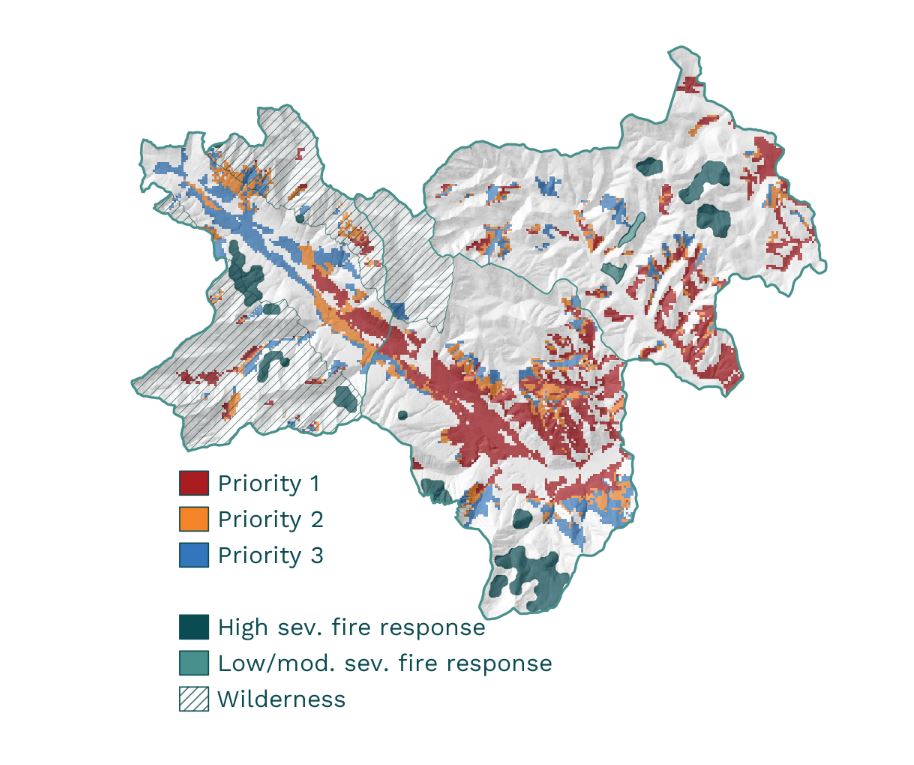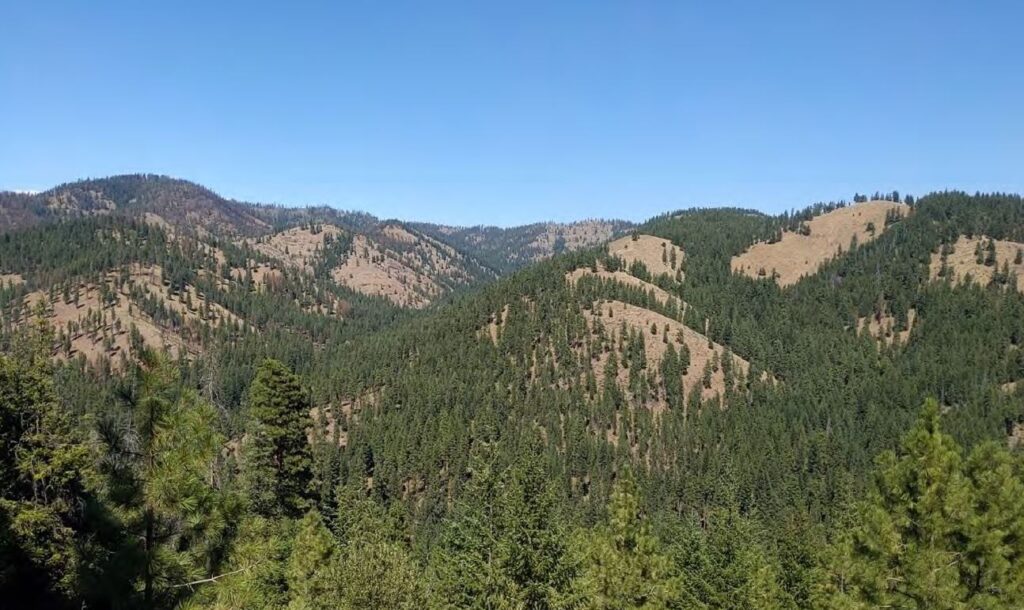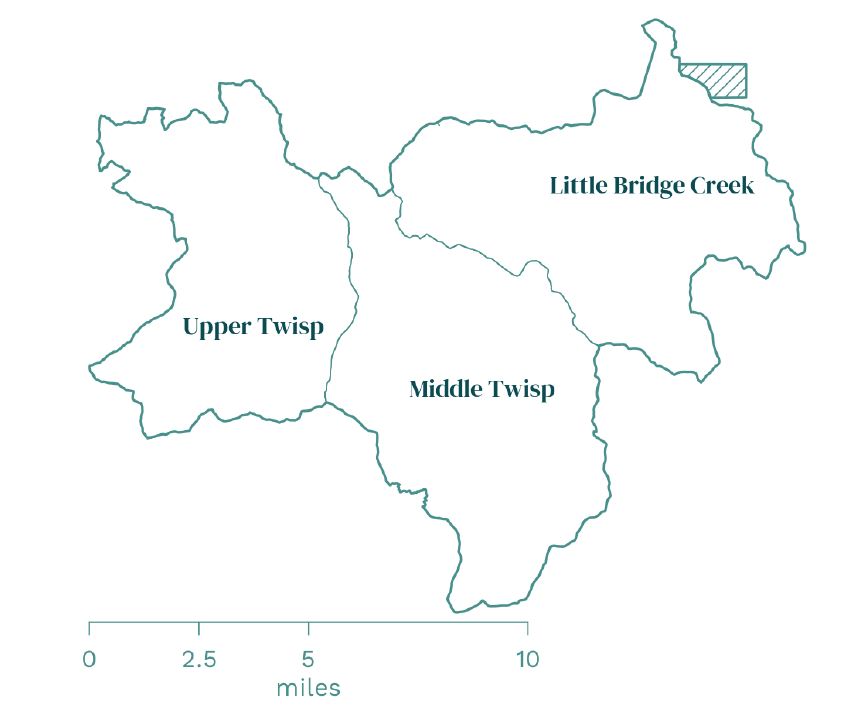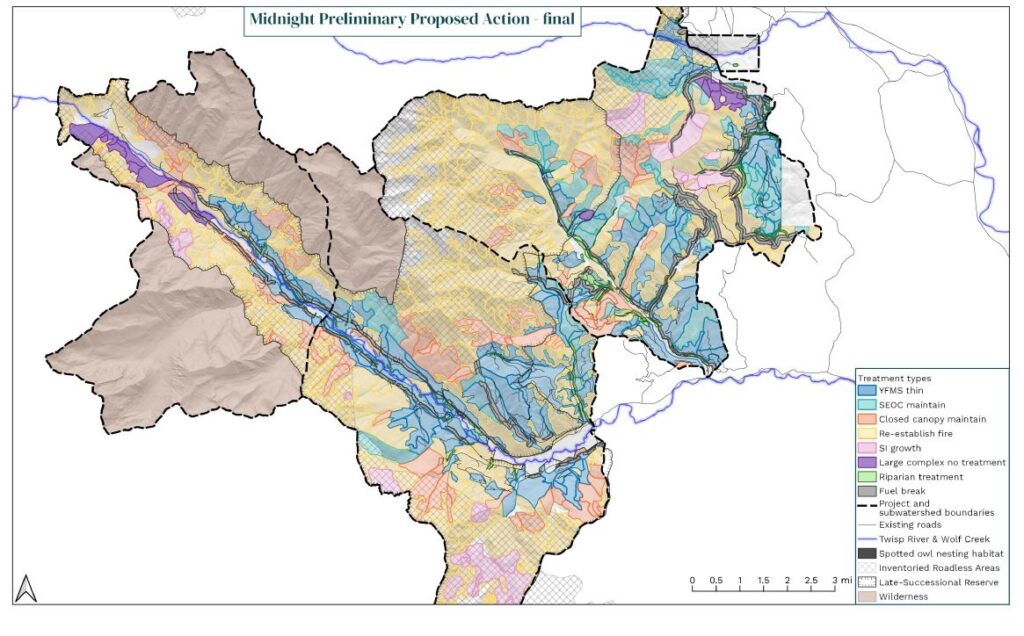The Midnight Restoration Project consists of Upper Twisp, Middle Twisp and Little Bridge Creek. The approximately 67,000-acre Midnight Restoration Project area falls within the Methow Valley Ranger District (MVRD) of the Okanogan-Wenatchee National Forest (OWNF). Landscape-level assessments reveal that current departures in forest structure, spatial patterns, and fuel loads favor larger, more severe disturbances relative to historical baselines and hinder adaptation to climate change. The need has been identified to reduce forest density and change the spatial patterns of trees across a total of about 8,850-12,500 acres, or 13-19% of the landscape, with individual patches ranging from about 10-200 acres. Of the three sub-watersheds that comprise the Midnight planning area, about 20% of the treatment need is in Upper Twisp, about 50% is in Middle Twisp, and about 30% is in Little Bridge Creek.
Working to restore conditions will help promote a resilient landscape, protect key resources, enhance habitat for wildlife focal species and increase human safety, while also providing an opportunity to involve the community and increase local economic well-being. Maintaining access to the forest through a safe and efficient transportation system is also a key component of increasing resilience.
In 2022, the NCWFHC took on pre-NEPA analyses and planning to support the MVRD’s development of the Midnight Restoration Project. The Wilderness Society funded development of a landscape evaluation and prescription and a Preliminary Proposed Action (PPA) by Resilient Forestry consultants; however, earlier work underpinning the Midnight project was funded by other collaborative members including Conservation Northwest, the Washington Department of Natural Resources, and partners. Prior OWNF work on overlapping portions of the Draft Twisp Restoration Project provided much of the information for the PPA, and MVRD staff provided essential engagement and support.
Desired PPA outcomes are to improve fire and drought resilience; align forest structure and landscape-level spatial patterns with reference conditions; and protect existing high-quality owl habitat, sustainable multi-layered forest canopy patches, and riparian and microtopographic variation. Within stands, the PPA would retain and promote most large trees and all old trees while restoring characteristic spatial patterns of tree clumps and canopy openings.
Development of the Midnight Project PPA is one step of many toward the Proposed Action. As a bridge between the landscape evaluation and the ultimate Proposed Action, the PPA is concerned with both landscape-level and stand-level conditions, goals, and policy and operational constraints. Minor changes to the PPA are expected after the OWNF initiates public scoping, the Midnight Restoration Project moves through the NEPA process, and field work is conducted to verify current conditions.




